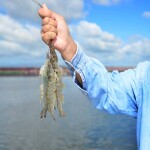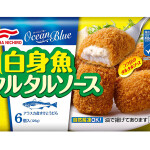The issue of human trafficking in the fishing industry in Southeast Asia has reared its ugly head in the mainstream media once again, this time in an Associated Press (AP) story. The report is one more example of how a disconnect from the problem — inadvertent or not — by people at the opposite end of the seafood supply chain allows forced labor to flourish.
The AP published a report last week that culminated a year of investigation into fishing industry trafficking in Indonesia and Thailand. The report linked fish from slave ships to suppliers that send product to, among other companies, Thai Union Frozen Products (TUF), one of the world’s largest seafood companies, and American companies Santa Monica Seafood and Stavis Seafoods.
There’s little doubt that Stavis Seafoods Owner Richard Stavis and TUF President Thirapong Chansiri were sincere when they told the media they didn’t know they were indirectly supporting forced labor, but one clear message from last week’s AP report is that any seafood company owner who doesn’t know what’s at the other end of the chain is running the risk of a very public embarrassment, not to mention a revelation that will disturb them, like it does with Stavis.
"The truth is, these are the kind of things that keep you up at night," he told the AP. "That's the sort of thing I want to stop. ... There are companies like ours that care and are working as hard as they can."
Another clear message from the AP piece is that the farther one goes down the chain, the hollower the see-no-evil act comes across. At the core of its investigation was the port of Benjina in Indonesia, where fishing boats carrying slaves – AP reporters heard them shouting for help – offloaded their catches into the Silver Sea Line, a refrigerated cargo ship operated by Silver Sea Reefer Co. in Thailand.
The company’s owner, Panya Luangsomboon, told the AP in protest of accusations he supported slavery, "We only carry the shipment and we are hired in general by clients. We're separated from the fishing boats."
Ultimately, it should not be up to foreign buyers to babysit and police their suppliers to the extent that the AP has; this is supposed to be the realm of government authorities. Unfortunately, numerous accounts have noted Thailand’s government is rife with corruption, and even if the Thai authorities dealt with forced labor to the liking of the state department and the NGOs, the AP story shows how easy it has been for trafficking fishing boat captains to simply steam into another country’s waters to do their work. It is becoming clearer that it’s up to the seafood companies in foreign countries at the other end of the supply chain to take action if they want to be sure they are not tied to these monstrous practices.
Gavin Gibbons, spokesman for the National Fisheries Institute in the United States, said the AP story serves as a “clarion call to the companies to say, ‘hey, this is something that is happening,’” and the message to American buyers is simple: get to know where your suppliers get their product.
“They need to immediately take a second look at their supply chains,” he said.
It goes without saying, however, that the traffickers do what they do because they can make money doing it, money that comes from buyers who don’t know any better. While a more vigilant importer in the United States or the EU won’t alone stop the forced labor problem, identifying where the traffickers are and making sure not to do business with them can at least make the practice a little less lucrative.





